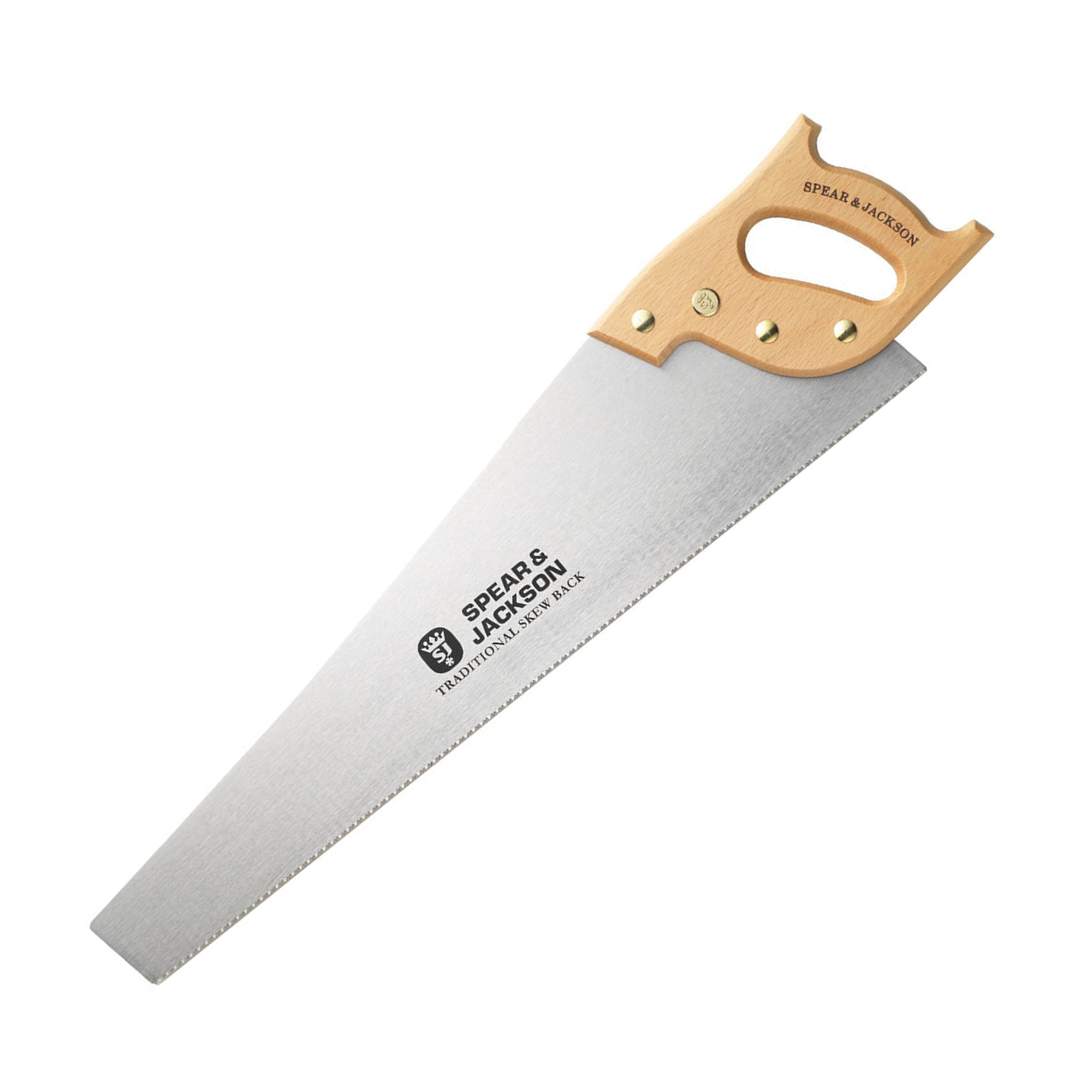Description
THIS PRODUCT: Blade Size 22″ 550mm, High Quality Solid Timber Handle, Skewback Design, Precision Cross Ground Teeth for Extra Sharpness, High Carbon Sheffield Steel Blade with Protective Lacquer, Medium / 10PPI.
IN GENERAL: A skewback saw, also known as a dovetail saw, is a specialized hand saw designed for precision cutting in woodworking, particularly for creating dovetail joints and other fine, detailed joinery. It is characterized by its narrow blade and unique handle shape. Here’s a brief description of a skewback saw and some common uses:
Description:
- Blade: The blade of a skewback saw is relatively thin and narrow, typically measuring around 8 to 10 inches (20 to 25 centimeters) in length. It has fine teeth, often with a crosscut pattern, which allows for clean, accurate cuts in wood. The blade is rigid and usually taper-ground, meaning it is thicker at the back and tapers toward the teeth.
- Handle: The handle of a skewback saw is typically designed with an open, pistol-grip shape that allows for a comfortable and ergonomic grip. It may also feature a brass or steel backplate that reinforces the handle and provides stability to the blade.
- Teeth Per Inch (TPI): Skewback saws typically have a high tooth count, with fine teeth ranging from 14 to 20 TPI or more. This tooth configuration is suitable for precise cuts in hardwoods and softwoods.
Common Uses:
- Dovetail Joints: The primary use of a skewback saw is in creating dovetail joints, a type of woodworking joint known for its strength and aesthetics. The fine blade and narrow kerf of the saw allow for precise cuts needed to form the interlocking tails and pins of dovetail joints.
- Fine Joinery: Skewback saws excel in various fine woodworking joinery tasks, including making tenons, mortises, and other intricate joints that require precise and clean cuts.
- Detail Work: Woodworkers use skewback saws for detailed and intricate woodworking projects, such as crafting decorative moldings, inlay work, and fine joinery in cabinetry and furniture making.
- Trimming and Flush Cutting: The fine teeth and narrow blade of a skewback saw make it ideal for trimming and flush cutting wooden components, such as dowels, plugs, and protruding tenons, to achieve a neat and flush finish.
- Coping Joints: Skewback saws are commonly used in coping joints, a technique often employed in trim carpentry to create tight-fitting, inside corners for moldings and baseboards.
- Precision Crosscutting: While not as fast as a larger crosscut saw, a skewback saw can be used for precision crosscutting tasks where accuracy is more critical than speed.
- General Fine Cutting: Skewback saws are versatile tools for various fine cutting tasks in woodworking, where the goal is to achieve clean, accurate cuts with minimal tear-out.
Skewback saws are highly regarded by woodworkers for their ability to make precise, clean cuts in woodworking joinery and detail work. They are essential tools for those who specialize in fine woodworking and cabinetmaking, where precision and attention to detail are paramount. When using a skewback saw, it’s important to maintain the sharpness of the blade to ensure clean and accurate cuts.


